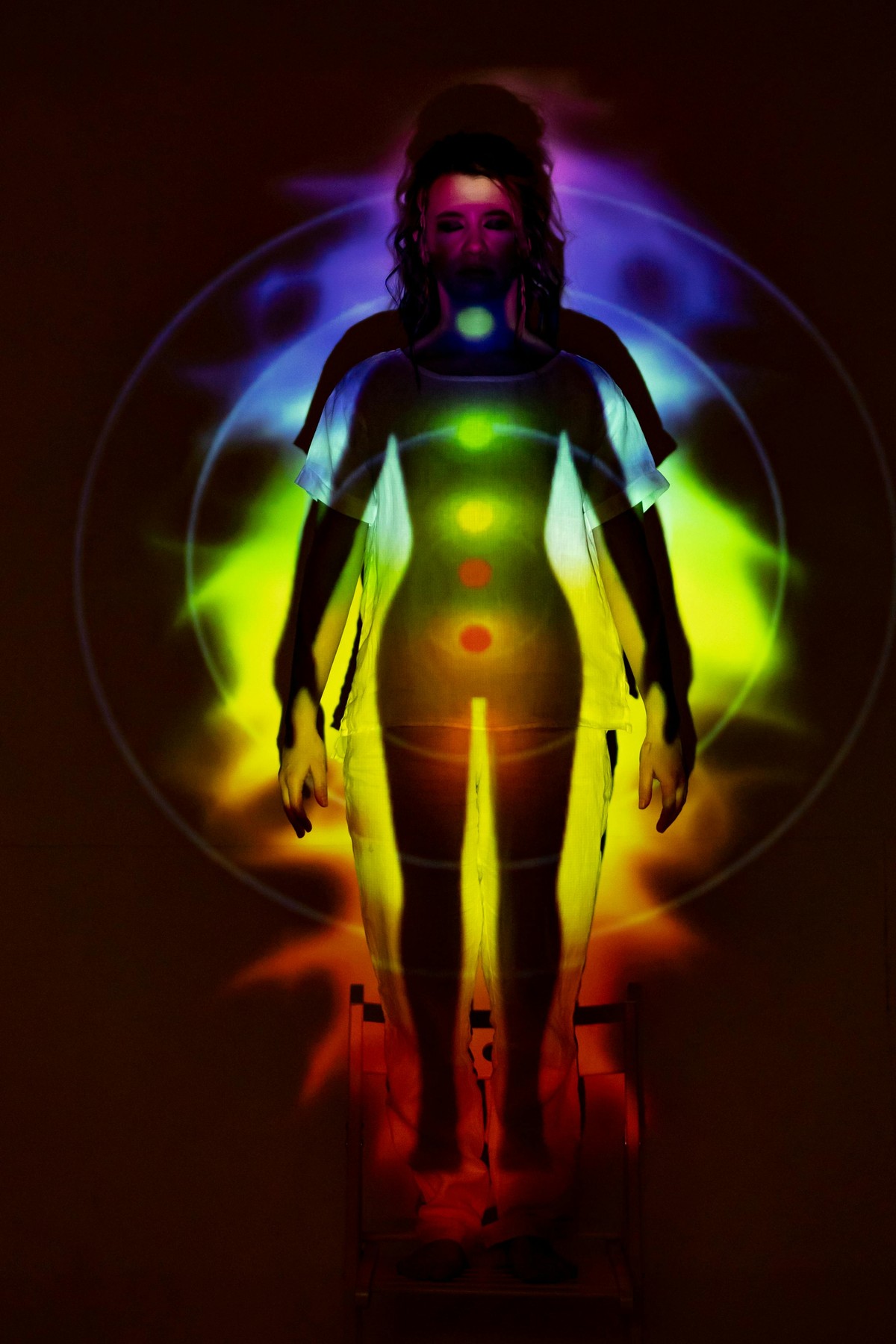Awakening the Inner Universe: Chakra Wisdom and the Temple Within

Across civilizations, the human body has often been seen as more than a physical vessel — a mirror of the cosmos, a temple of the spirit, a bridge between seen and unseen. In this piece, ancient wisdom converges with contemporary insights to explore how the body, mind, and spirit are deeply intertwined, and how the subtle energies within us may shape the quality of our lives — down to how we sleep and heal.
Introduction: The Human Body as a Microcosm
In ancient Hindu philosophy, the human body is seen not merely as a physical construct, but as a microcosm of the universe. Just as the cosmos is composed of intricate systems and divine energies, so too is the human body—a living temple where spirit, mind, and matter coalesce. Ayurveda, India's holistic healing science, echoes this sacred view. It teaches that wellness is not achieved by fixing symptoms alone but by restoring harmony within a person’s entire being—body, mind, and spirit.
Modern science, too, is beginning to explore this interconnectedness. Research shows that emotional trauma affects immunity, stress disrupts gut health, and posture influences mood. We are holistic beings, not isolated systems.
Interconnectedness of Mind, Body, and Spirit
Mind (Manas) governs perception, thought, and emotion. In Ayurveda, the mind is considered one of the three pillars of life (Traya Upastambha). A disturbed mind can throw off digestion, weaken immunity, and lead to disease.
Body (Sharira) is the physical vehicle, made up of the five elements—earth, water, fire, air, and ether. It must be nurtured with food, rest, movement, and touch.
Spirit (Atman) is the eternal, unchanging self. In Vedanta and Yoga, the Atman is identical to Brahman, the universal consciousness. When we forget our spiritual essence, we suffer an imbalance.
Scientific studies support these ideas. For instance, meditation, rooted in spiritual traditions—has been shown to reduce inflammation, balance cortisol levels, and even increase gray matter density in the brain (Lazar et al., 2005, NeuroReport). Ayurveda reminds us that true healing occurs only when these three are aligned.
 Credit: Indic Brics
Credit: Indic Brics
Temple and the Body: A Sacred Parallel
Hindu temples are not just places of worship—they are architectural representations of the human body. Each element of a temple mirrors a part of us:
|
Temple Element
|
Human Equivalent
|
Chakra
|
|
Gopuram
|
Feet
|
—
|
|
Dhwaja
|
Genitals
|
Mooladhara (Root)
|
|
Water Tank
|
Waist
|
Swadhisthana (Sacral)
|
|
Agni (Fire)
|
Stomach
|
Manipura (Solar Plexus)
|
|
Antarala
|
Neck
|
Vishuddha (Throat)
|
|
Diety Room
|
Between Eyebrows
|
Ajna (Third Eye)
|
|
Garbhagriha
|
Head/Crown
|
Sahasrara (Crown)
|
Temples are aligned eastward, just like our spinal axis that rises toward the head, our sacred sanctum. Inside each of us is a divine force seeking expression, and the chakras are the gateways.
Chakras: Your Inner Energy Centers
“Chakra” in Sanskrit means “wheel” or “disk.” These are energy centers in the subtle body (sukshma sharira) that connect us to the cosmos. They are not visible to the physical eye but can be felt through awareness, meditation, or breathwork.
The Seven Major Chakras:
-
Mooladhara (Root Chakra): Base of the spine. Stability, survival.
-
Swadhisthana (Sacral Chakra): Pelvis. Emotion, sexuality.
-
Manipura (Solar Plexus): Stomach. Power, digestion, identity.
-
Anahata (Heart Chakra): Chest. Love, compassion, balance.
-
Vishuddha (Throat Chakra): Neck. Truth, communication.
-
Ajna (Third Eye): Between eyebrows. Intuition, vision.
-
Sahasrara (Crown): Top of the head. Connection to the divine.
Balanced Chakras = Flow of Life Energy
When chakras are balanced, life energy (prana) flows freely. You feel aligned, vibrant, intuitive, and healthy. When blocked, you experience stagnation—physically, emotionally, or spiritually. Practices like yoga, pranayama, and sleep on an ergonomic mattress like NadaUp's help restore this sacred balance (EN NadaUp - Every night…).
Knowing Your Body: The Path to Self-Healing
Ayurveda emphasizes svabhava—your natural constitution. It believes the body is self-healing when in rhythm with nature. But poor habits disrupt this harmony.
Harmful Habits:
-
Sleeping late or on irregular schedules
-
Using mobile phones before bed
-
Eating heavy meals late at night
-
Overstimulating the senses
-
Lack of body movement
-
Sleeping on improper surfaces

You Can’t Remove a Habit—You Replace It
Habits are neural pathways. You cannot simply erase them, but you can overwrite them. Here’s where NadaUp becomes your ally. By offering a clinically tested, high-performance mattress that ensures deeper sleep, body comfort, temperature regulation, and posture alignment, NadaUp helps embed new, positive bedtime rituals (EN NadaUp - Every night)
Scientific tests by Northumbria University have shown:
-
29% faster falling asleep
-
7% better sleep efficiency
-
69% faster cooling
-
60% better pressure relief (EN NadaUp - Every night)
NadaUp’s medically approved foam (by MHRA and NICE) not only aids physical alignment but also promotes emotional and spiritual clarity through improved rest (EN NadaUp - Every night)
A Final Word: Your Body Is Sacred
Think of your body as a temple gifted to you by the universe. With such a sacred design, would you want to destroy it with careless choices?
Change begins with conscious sleep—a sacred act of restoration. Start by replacing your old mattress with a NadaUp orthopedic medical mattress. Your mind, body, and spirit deserve this alignment, just as every temple deserves its deity.
References:
-
Lazar, S. W., et al. (2005). “Meditation experience is associated with increased cortical thickness.” NeuroReport, 16(17), 1893–1897.
-
Sethi, J. K., & Sood, S. (2012). “Effect of yoga nidra on stress and sleep quality in university students.” Indian Journal of Physiology and Pharmacology, 56(4), 431–434.
-
NadaUp Product Research & Clinical Results









